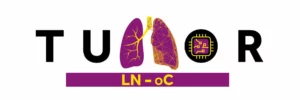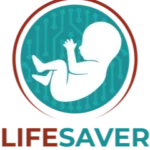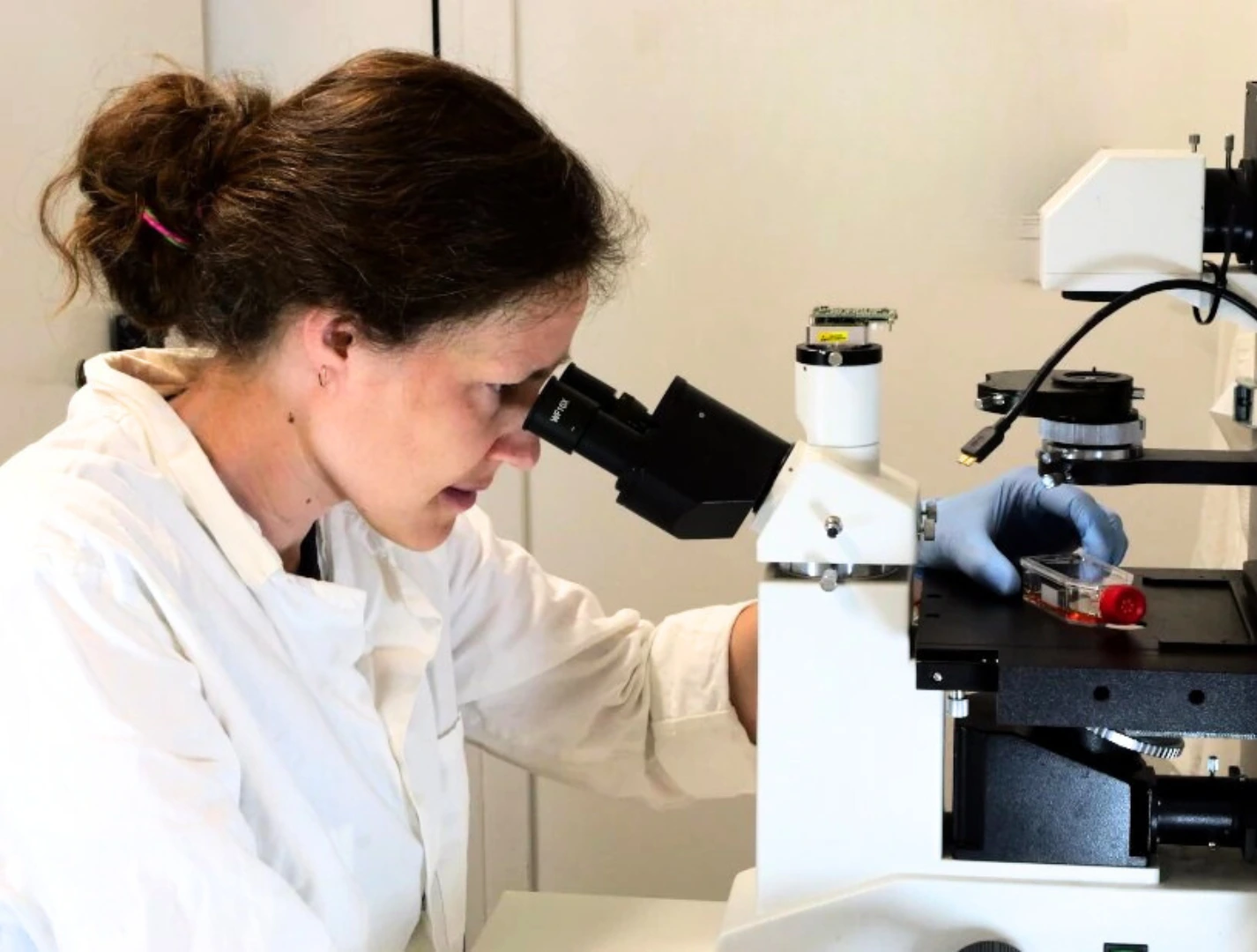Horizon Europe 2026/2027 best topics for "microbiome science"
Writer
Celeste Chidiac, PhD
Keywords
Microfluidic Devices, Intelligent Microfluidics, Artificial Intelligence, Machine Learning
Opening
Dec 2025, Jan/Feb/Mar/Apr 2026, Feb/Mar/Apr 2027
Deadline
Apr/Jun/Sep 2026/2027
Keywords
Intelligent Microfluidics
Deep Learning
Microfluidic Devices
Artificial Intelligence
Machine Learning
sustainable food systems
antimicrobial resistance
Bioremediation
bio‑based value chains
Your microfluidic SME partner for Horizon Europe!
We take care of microfluidic engineering, work on valorization and optimize the proposal with you
Horizon Europe 2026/2027 Calls
Ordered by "microbiome science" relevance
We have categorized the most relevant topics from the Horizon Europe 2026-2027 work programmes according to the impact that “microbiome science across food-health-environment” can have on the calls and related topics. We are sharing our analysis in case it can help you with project funding efforts. And, of course, if our microfluidics expertise can be of use to you as a partner, we would be delighted to discuss it further.

The calls below cover the core microbiome calls in CL6 (farm‑to‑fork), Missions (Cancer; Soil AMR), zero‑pollution bioremediation, and bioeconomy/biotech standardization/scale‑up, plus AI foodome.
The relevance is indicated at the beginning of the topic in square brackets.
Discover more!
Calls ordered by "microbiome science across food-health-environment" relevance
[98%] HORIZON-CL6-2026-02-FARM2FORK-11 – INTEGRATING A HOLISTIC PERSPECTIVE IN MICROBIOME RESEARCH FOR RESILIENT, COMPETITIVE AND SUSTAINABLE FOOD SYSTEMS
- Type of action: RIA. Call: Call 02 – single stage (2026). Opening: 14 Jan 2026. Deadline: 14 Apr 2026.
- Budget: 11.00 M€. Expected/project: 5.00-6.00 M€. # projects: 2.
- Scientific scope: This topic asks for system-level microbiome R&I across food systems, using multi-omics, model microbiome communities, and standardized protocols to improve reproducibility. It explicitly promotes “holistic systems approaches” to link microbiomes with host, diet, and environment, and calls for common data assets with research infrastructures (e.g., ELIXIR-like nodes), reference strains, and validated models to underpin safe, effective solutions at scale. It stresses coordination and data standards so results are comparable and translatable along the farm-to-fork chain.
- Why it fits microbiome R&I: Ideal for projects that integrate metagenomics/metabolomics, organ‑on‑chip or microphysiological models, and standardized cultivation or synthetic communities to move beyond siloed studies. The emphasis on reference materials, model ecosystems, and data stewardship maps directly to programmes that engineer, modulate, or monitor microbiomes with clear translational pathways to farming, food processing, and nutrition.
[95%] HORIZON-CL6-2027-02-FARM2FORK-07 – TOWARDS COMMERCIALIZATION OF FOOD SYSTEMS MICROBIOME SOLUTIONS
- Type: IA. Call: Call 02 – single stage (2027). Opening: 20 Apr 2027. Deadline: 23 Sep 2027.
- Budget: 15.50 M€. Expected/project: 7.00-8.00 M€. # projects: 2.
- Scientific scope: Focus on scaling validated microbiome solutions (e.g., for food safety/quality, nutrition, shelf‑life, waste reduction), with multi-actor pilots, market readiness, regulatory aspects, and TRL advancement. It targets real-world deployment and measurable impacts in food chains.
- Why it fits: Tailor-made for consortia bringing mature microbiome interventions (probiotics/postbiotics, fermentation consortia, phage or bacteriocin strategies, microbiome-aware processing) to market with robust demonstrations and compliance roadmaps.
[93%] HORIZON-CL6-2027-02-FARM2FORK-03 – MICROBIOME FOR TERRESTRIAL LIVESTOCK SUSTAINABILITY AND HEALTH WITHIN A ONE HEALTH APPROACH
- Type: RIA. Call: Call 02 – single stage (2027). Opening: 20 Apr 2027. Deadline: 23 Sep 2027.
- Budget: 12.00 M€. Expected/project: ~6.00 M€. # projects: 2
- Scientific scope: Develop actionable microbiome-based strategies to improve livestock productivity, health, and welfare while reducing antimicrobials, integrating diet, breeding, environment, and management; link farm‑, animal‑, and environment‑level data and consider pathogen dynamics under One Health.
- Why it fits: Enables microbiome interventions (pre/probiotics, microbial consortia, targeted feed additives) and surveillance (resistome, pathogen carriage) with strong environmental co‑benefits (e.g., emissions). Perfect for farm-scale trials and longitudinal host-microbiome studies.
[90%] HORIZON-MISS-2026-02-CANCER-02 – MICROBIOME FOR EARLY CANCER PREDICTION BEFORE THE ONSET OF DISEASE
- Type: RIA. Call: HORIZON‑MISS‑2026‑02 (Mission: Cancer). Opening: 10 Dec 2025. Deadline: 15 Sep 2026.
- Budget: 15.00 M€. Expected/project: 7.50 M€. # projects: 2.
- Scientific scope: Multi-omics discovery and validation of microbiome signatures predictive of cancer risk well before clinical onset; integration with lifestyle/exposome data; robust cohorts/biobanks; attention to ethics, data governance, and clinical translation pathways.
- Why it fits: Catalyses microbiome biomarker pipelines (metagenomic/viromic markers, metabolites), risk models, and non‑invasive screening tools, linking to clinical validation and regulatory science for future screening programmes.
[88%] HORIZON-CL6-2026-02-FARM2FORK-12 – LEVERAGING R&I KNOWLEDGE ON MICROBIOME
- Type: CSA. Call: Call 02 – single stage (2026). Opening: 14 Jan 2026. Deadline: 14 Apr 2026.
- Budget: 2.00 M€. # projects: 1.
- Scientific scope: Coordination, synthesis, and exploitation of microbiome R&I results across agri‑food, including mapping, knowledge hubs, standards, and uptake by stakeholders/policymakers.
- Why it fits: Strategic action to turn fragmented findings into actionable roadmaps, common assets, and guidance, ideal for communities building shared datasets, protocols, and best practices in microbiome science.
[80%] HORIZON-CL6-2026-02-FARM2FORK-09 – SUSTAINABLE AND HEALTHY DIETS FOR CARDIOVASCULAR DISEASES PREVENTION WITH THE SUPPORT OF DIGITAL APPLICATIONS
- Type: IA. Call: Call 02 – single stage (2026). Opening: 14 Jan 2026. Deadline: 14 Apr 2026.
- Budget: 12.00 M€. Expected/project: ~6.00 M€. # projects: 2.
- Scientific scope: Design and validate diet interventions for CVD prevention supported by digital tools; explicitly calls for investigating host-microbiota interactions involved in metabolic pathways that modulate cardiovascular risk.
- Why it fits: Opens a clinically‑relevant route to test food‑as‑medicine strategies mediated by the gut microbiome (e.g., fibre/fermented foods, polyphenols) with digital phenotyping and personalized guidance.
[78%] HORIZON-MISS-2026-05-SOIL-02 – TACKLE ANTIMICROBIAL RESISTANCE IN SOILS
- Type: RIA. Call: HORIZON‑MISS‑2026‑05 (Mission: A Soil Deal for Europe). Opening: 14 Jan 2026. Deadline: 21 Apr 2026.
- Budget: 25.00 M€. Expected/project: 4.00-8.00 M€. # projects: 4.
- Scientific scope: Understand and mitigate AMR emergence and spread in soils; develop monitoring frameworks and interventions recognizing the soil microbiome’s central role in soil health and resistance dynamics.
- Why it fits: Aligns microbiome, resistome, and mobile‑genetic‑element analytics with land management strategies to curb AMR at source, linking environmental and public health.
[68%] HORIZON-CL6-2026-01-ZEROPOLLUTION-01-TWO-STAGE – DECONTAMINATE AND BIOREMEDIATE AQUATIC POLLUTION
- Type: RIA. Call: Call 01 – two‑stage (2026). Opening: 12 Feb 2026. Deadlines: 16 Apr 2026 (1st), 23 Sep 2026 (2nd).
- Budget: 23.00 M€. Expected/project: 7.00-8.00 M€. # projects: 3.
- Scientific scope: Demonstrations of biological and ecosystem‑based decontamination with microorganisms and microbial communities, considering pollutants, sediments, and ecological impacts.
- Why it fits: Strong opportunity for engineered or naturally‑selected microbial consortia, and biofilm systems to remove contaminants; pairs well with metagenomic monitoring and risk assessment.
[66%] HORIZON-CL6-2026-01-ZEROPOLLUTION-02 – BIOREMEDIATION OF UKRAINE’S ECOSYSTEMS CONTAMINATED BY CONFLICTS
- Type: IA. Call: Call 01 – single stage (2026). Opening: 17 Apr 2026. Deadline: 17 Sep 2026.
- Budget: 11.00 M€. Expected/project: 5.00-6.00 M€. # projects: 2
- Scientific scope: Deploy site-adapted remediation strategies, including biotechnologies, to restore contaminated soils and waters in war-affected regions.
- Why it fits: Microbial bioremediation and biosensing can shorten clean‑up timelines, while metagenomic/ecotoxicological dashboards document recovery of ecosystem microbiomes.
[65%] HORIZON-CL6-2027-02-FARM2FORK-08 – AI-POWERED FOODOME CHARACTERIZATION
- Type: IA. Call: Call 02 – single stage (2027). Opening: 20 Apr 2027. Deadline: 23 Sep 2027.
- Budget: 8.00 M€. # projects: 1.
- Scientific scope: Build AI pipelines to characterize the “foodome” (comprehensive food composition/structure) and link data to health‑relevant outcomes.
- Why it fits: Foodome features (fibres, polyphenols, matrices) are key determinants of gut microbiome function; this topic enables data infrastructure to connect diet, microbiota, and phenotypes at scale.
[58%] HORIZON-CL6-2026-01-CIRCBIO-11 – HARNESSING THE UNIQUE PROPERTIES OF MARINE ORGANISMS TO DELIVER SUSTAINABLE BLUE BIO-BASED PRODUCTS
- Type: RIA. Call: Call 01 – single stage (2026). Opening: 17 Apr 2026. Deadline: 17 Sep 2026.
- Budget: 10.00 M€. Expected/project: ~5.00 M€. # projects: 2.
- Scientific scope: Explore and valorize marine biodiversity, including micro‑organisms and fungi, for novel bio‑based products and processes with sustainability safeguards.
- Why it fits: Marine microbiomes provide enzymes, metabolites, and consortia for bioprocessing, biopreservation, and novel ingredients; strong bridge to industrial microbiology assets.
[56%] HORIZON-CL6-2026-01-CIRCBIO-07 – ADVANCING THE EUROPEAN BIO-BASED INNOVATION ENABLED BY BIOTECHNOLOGY AND BIOMANUFACTURING CONCEPTS
- Type: RIA. Call: Call 01 – single stage (2026). Opening: 17 Apr 2026. Deadline: 17 Sep 2026.
- Budget: 12.00 M€. Expected/project: ~4.00 M€. # projects: 3
- Scientific scope: Mature biomanufacturing concepts (including microbial chassis, precision fermentation, biocatalysis) into scalable, sustainable bio‑based value chains.
- Why it fits: Funds upstream/downstream steps where engineered microbial communities and microbiome‑derived enzymes can deliver new foods, ingredients, and green processes.
[52%] HORIZON-CL6-2027-01-CIRCBIO-08 – BIOTECHNOLOGY APPLICATION FOR CCU
- Type: RIA. Call: Call 01 – two‑stage (2027). Opening: 04 Feb 2027. Deadlines: 08 Apr 2027 (1st), 16 Sep 2027 (2nd).
- Budget: 10.00 M€. Expected/project: ~5.00 M€. # projects: 2.
- Scientific scope: Use biotechnology, including microbial biocatalysis, for carbon capture and utilisation (CCU) to create circular products.
- Why it fits: Advances microbial CO₂‑fixing pathways and consortia; useful for microbiome-inspired bioprocess intensification and circular fermentation platforms.
[50%] HORIZON-CL6-2026-01-CIRCBIO-08 – PRE‑NORMATIVE RESEARCH FOR STANDARDISATION OF BIO‑BASED PRODUCTS
- Type: RIA. Call: Call 01 – single stage (2026). Opening: 17 Apr 2026. Deadline: 17 Sep 2026.
- Budget: 8.00 M€. Expected/project: ~4.00 M€. # projects: 2.
- Scientific scope: Methods and standards for safety/quality/sustainability of bio-based products, enabling market trust and uptake.
- Why it fits: Microbiome-derived ingredients and live products need harmonized standards; this topic can underpin quality control (e.g., viable counts, contaminant genomes, stability).
[48%] HORIZON-CL6-2026-03-GOVERNANCE-08 – BOOSTING DATA AVAILABILITY AND AI SOLUTIONS IN FOOD FOR CONSUMERS AND FOOD SERVICE PROFESSIONALS
- Type: IA. Call: Call 03 – single stage (2026). Deadline: 15 Apr 2026.
- Budget: 15.00 M€. Expected/project: ~7.50 M€. # projects: 2.
- Scientific scope: Scale generative‑AI and data platforms for food decisions, building high‑value datasets, and ensuring data sovereignty.
- Why it fits: Diet is a primary lever on the gut microbiome; improved food data and decision‑support can operationalize personalized, microbiome-friendly diets and interventions.
[46%] HORIZON-INFRA-2026-DEV-01-02 – CONSOLIDATION OF THE RI LANDSCAPE – PILOTS FOR STRATEGIC COORDINATION BY LARGE THEMATIC CLUSTERS OF PAN‑EUROPEAN RIS
- Type: RIA. Call: Research Infrastructures 2026 (HORIZON‑INFRA‑2026‑01). Opening: 10 Mar 2026. Deadline: 16 Jun 2026.
- Budget: 40.00 M€. Expected/project: 4.00-8.00 M€. # projects: 6.
- Scientific scope: Pilot integrated access and coordination across RI clusters; streamline pathways, portals, and EOSC links for researchers.
- Why it fits: Microbiome projects benefit from coordinated access to sequencing, bioinformatics, biobanks, and phenotyping platforms; this topic can cement FAIR multi-omics access.
[45%] HORIZON-INFRA-2026-01-EOSC-01 – UPTAKE OF FAIR DATA MANAGEMENT PRACTICES AND OF EOSC BY RESEARCH COMMUNITIES AND RESEARCH INFRASTRUCTURES (EOSC PARTNERSHIP)
- Type: RIA. Call: Research Infrastructures 2026. Opening: 10 Mar 2026. Deadline: 16 Jun 2026.
- Budget: 40.00 M€. Expected/project: ~40.00 M€. # projects: 1.
- Scientific scope: Scale EOSC uptake and FAIR data practices across communities and RIs.
- Why it fits: Microbiome research is data-intensive; EOSC integration boosts discovery, interoperability (metagenomes, metabolomes), and reproducibility across cohorts and sectors.
[44%] HORIZON-INFRA-2027-SERV-01-02 – ACCESS TO RESEARCH INFRASTRUCTURE SERVICES TO ENABLE R&I ADDRESSING EU PRIORITIES AND EMERGING CHALLENGES
- Type: Call: Research Infrastructures 2027. Opening: 09 Mar 2027. Deadline: 15 Jun 2027.
- Budget:00 M€. Expected/project: ~6.00 M€. # projects: 5
- Scientific scope: Trans‑national/virtual access pilots to RI services across priority domains; includes data integration and user support.
- Why it fits: Offers funded access to multi-omics cores, gnotobiotic facilities, microbioprocessing, and data platforms that microbiome projects routinely require.
[40%] HORIZON-CL6-2027-02-CLIMATE-03 – CARBON FARMING INNOVATION AND SCALE‑UP
- Type: RIA. Call: Call 02 – single stage (2027). Opening: 20 Apr 2027. Deadline: 23 Sep 2027.
- Budget: 12.00 M€. Expected/project: ~6.00 M€. # projects: 2.
- Scientific scope: Develop/scale carbon‑sequestration practices; robust MRV and environmental safeguards.
- Why it fits: Soil carbon outcomes are microbiome-mediated; this call can test practices that steer microbial networks (cover crops, amendments) and quantify microbiome-linked MRV.
[38%] HORIZON-CL6-2027-01-BIODIV-07 – HEALTH OF ECOSYSTEMS AND WILD SPECIES, PREDICTIONS AND IMPACTS ON HUMAN HEALTH, IN THE FACE OF EXISTING AND EMERGING STRESSORS, FROM A ONE HEALTH APPROACH
- Scientific scope: One‑Health framing linking ecosystem condition and human health; opportunities for microbiome surveillance across wildlife/environment interfaces.
- Why it fits: Supports microbiome-enabled early‑warning of zoonotic risks and ecosystem degradation via metagenomic indicators and modelling.
Microfluidics: what it can bring to microbiome R&I in these topics
- High‑throughput cultivation & screening of difficult taxa and synthetic consortia (nanolitre to microlitre droplet platforms) to discover functions and optimize co-cultures.
- Microphysiological systems (gut‑on‑chip, rumen‑on‑chip, skin‑on‑chip) to interrogate host-microbe-diet interactions under controlled gradients (shear, oxygen, nutrients).
- Rapid antimicrobial/AMR testing in complex communities, enabling phenotypic assays of resistome dynamics and synergy with phage/bacteriocin strategies.
- Inline analytics & single‑cell methods (on-chip FISH, Raman, optical/electrochemical sensors) for functional phenotyping and metabolite flux tracking.
- Scalable bioprocess intensification (micro‑bioreactors to parallelize design-build-test-learn; perfusion/chemostat chips for steady‑state ecology and evolution).
- Environmental biosensing for bioremediation/soil health: microfluidic samplers and lab-on-chip assays for pollutants, enzyme activities, and microbial activity indices.
- Standardization & QA/QC: microfluidic reference workflows and calibrants (e.g., synthetic communities, count standards) to strengthen reproducibility across labs and pilots.
The MIC already brings its expertise in microfluidics to Horizon Europe:
H2020-NMBP-TR-IND-2020

Microfluidic platform to study the interaction of cancer cells with lymphatic tissue
H2020-LC-GD-2020-3

Toxicology assessment of pharmaceutical products on a placenta-on-chip model
FAQ – Horizon Europe 2026-2027: Best topics for microbiome science
What do you consider to be the most microbiome-ready calls of 2026-2027?
CL6 Farm-to-Fork is ahead of the pack in case you happen to be working at the food-health-environment crossroads. Two headlines: a 2026 RIA about whole food systems’ holistic microbiome research, and a 2027 IA about translating validated microbiome solutions to market. Include a 2027 RIA on livestock microbiomes (One-Health), a 2026 cancer Mission RIA on early cancer prediction through microbiome signals, and a 2026 CSA to collaborate and capitalize on microbiome findings. These are surrounded by powerful supporting subjects: zero-pollution bioremediation, soil AMR, bio-based innovation / standards, and great soil microbiome procedures and resources.
Contents of the 2026 "holistic microbiome" CL6 RIA?
RIA approved one stage, including opening mid-January 2026 and closing mid-April 2026. Average budget -EUR 5-6M per project; low level of funding. It demands microbiome work at the system-level: model communities, multi-omics (including metabolomics/viromics), standardized protocols, reference strains, and interoperable data assets (imagine ELIXIR-type). Goal: translation, comparability, reproducibility along the farm-to-fork.
What does the IA of commercialization of microbiome solutions of food systems in 2027 anticipate?
Deployment, not discovery. Multi-actor pilots, TRL lift, regulatory/ quality pathways, and demonstrated effect on safety, quality, shelf-life, waste, or nutrition. Teams that have interventions demonstrated to be valid, probiotics/postbiotics, fermentation consortia, phages/bacteriocins, microbiome-conscious processing, score well when they demonstrate a realistic compliance/market strategy.
Anything special besides food and health?
Yes: Mission Cancer RIA (opens Dec 2025, deadline mid-Sep 2026) of microbiome signatures predicting pre-cancerous cancer risk. Anticipate severe cohorts/biobanks, multi-omics validation, and firm ethics/data governance. Ideal with non-invasive biomarkers and risk models with the capacity to drive screening and prevention.
Soils, AMR, and zero-pollution: Where do they belong?
The AMR Soil 2026 RIA of the Soil Mission connects the dynamics of the resistome to land management and monitoring. Zero-pollution provides an IA of bioremediation in conflict-affected ecosystems (two-stage RIA, 2026) and bioremediation of aquatic pollution (two-stage RIA, 2026). Consider microbial consortia, biofilms, and metagenome/ecotox dashboards.
What about bioeconomy, biomanufacturing, and CCU?
Backed by CIRCBIO in 2026/2027, supports biotech and biomanufacturing, microbial chassis, precision fermentation, biocatalysis, and a pre-normative standards call of bio-based products (relevant to QC of living microbes). Another biotechnology-for-CCU subject in 2027 is one in which engineered consortia can flourish.
Does data infrastructure qualify as a need?
It matters. The 2026/2027 INFRA calls facilitate FAIR practices, EOSC take-up, transnational access to RIs, and cluster coordination. The pieces here should anchor projects that exploit multi-omics, gnotobiotic facilities, standard phenotyping, or interoperable repositories or collaborate with RI actors to mitigate the risk of data stewardship and access.
In what assistance does microfluidics come?
- High-throughput cultivation/screening of challenging taxa & synthetic communities (droplets, parallel micro-bioreactors).
- Probe host-microbe-diet under controlled gradients, microphysiological systems, gut/rumen/skin-on-chip.
- Quick phenotypic AMR screening in complicated communities, as well as synergy mapping (incl. phage/bacteriocins).
- On-chip FISH, Raman, optical/electrochemical sensing, inline, and single-cell analytics to monitor function/metabolites.
- Perfusion/chemostat chips for steady-state ecology/evolution and DBTL loops.
- Lab-on-chip biosensing for bioremediation and soil health.
- Reproducibility and QA/QC Reference workflows and count standards (synthetic communities) are used.
Conclusion: microfluidics accelerates the time frame and provides detail where bulk techniques fail.
What is the rationale for introducing the Microfluidics Innovation Center (MIC) into a microbiome consortium?
Two big reasons:
- Execution. MIC automation of life-science microfluidics – organ-on-chip, high-throughput screening, inline sensing, and scale-down bioprocess devices is at its heart. We have been developing microphysical models for EU projects (e.g., placenta-on-chip toxicity, heart-on-chip environmental analysis, tumor-lymphatic interactions) and have turned these prototypes into reproducible workflows.
- Proposals that land. As an SME in various European consortia, MIC assists in developing workplans, KPIs, and data/standardization packages that receive reviewer acceptance. In our case, the introduction of a concentrated SME such as MIC, in our experience, does lead to a significant increase in successes over baseline; the difference is evident in the evaluation table.
What is a realistic work breakdown structure of a microbiome project that employs microfluidics?
A pattern that works:
- WP1: standards and reference resources.
- WP2: microfluidic culture/screening.
- WP3: defined gradient microphysical models.
- WP4: field pilots (food chain, farm, clinic)
- WP5: data/AI with FAIR/EOSC deliverables.
- WP6: market prep/regulatory/QA/QC.
- WP7: ethics, uptake, management, dissemination.
Insert the MIC slot into WPs 2-3-5-6 when required; bring RIs to WPs 1/5; lock the end user to WP4 early.



